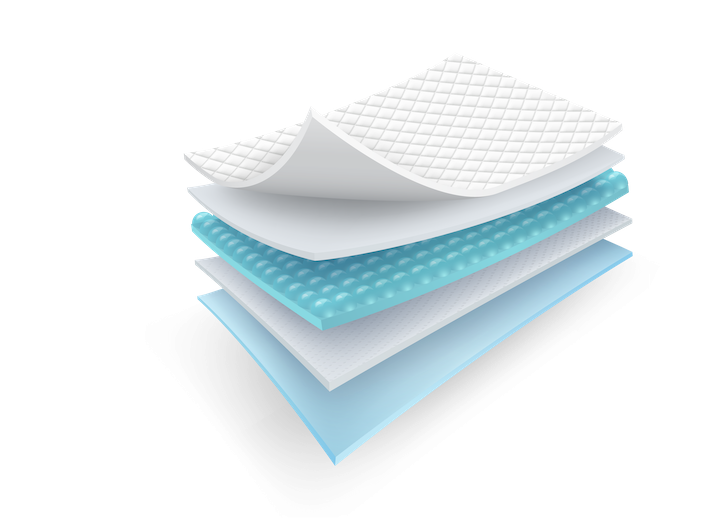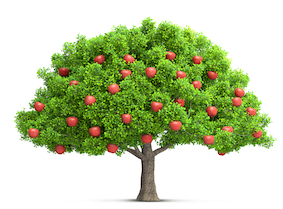Y1. Lesson 28. Texture - thick or thin?
Prior learning: None
Duration: 30 minutes
Materials:
Keywords: Beat, rhythm, singing, chanting, partners, rhymes, circle games.
Difficulty: ![]()
Prepare
Present
Texture - thick or thin?
Practise
la
 Melodic development
Melodic development
![]() Students improve their recognition of solfa note la.
Students improve their recognition of solfa note la.
- Students are seated and attentive.
- Students have been introduced to the solfa note la, which has been unconsciously used in songs with which the children are already familiar.
- Snail Snail is a perfect example to bring this note to students' attention.
- Explain that the class will become detectives and must discover more about the note la and where it can be found within a song.
- Lead the class in singing the song, then ask in which words la is to be found. Receive the correct answer of '- round and'.
- Ask students to use hand signs to show so, mi and la if you employ them in your teaching method.
- Use another song, such as Snail Snail, Lucy Locket, Ickle Ockle or Doggie Doggie, to repeat the discovery of where la is to be found within a song.
- It is helpful to draw or project the staff with the notes of the song. The graphic to the left demonstrates Snail Snail, focusing on la.
 Rhythmic development
Rhythmic development
![]() Students practise their skills in rhythm.
Students practise their skills in rhythm.
- Lead the class in singing Bluebells and then repeat using the time names of ta and ti-ti.
- Lead students in clapping and chanting the time names.
- Finally, with students seated, ask them to write the time names of the song's first half in their books or on paper.

 Creative movement
Creative movement
![]() Students use creative paly and inner hearing in this seated circle game.
Students use creative paly and inner hearing in this seated circle game.
- Students are seated and form a circle, and a student is chosen to sit in the centre.
- As the class sings, a key is passed from student to student.
- At the same time, all students pretend to pass something in time with the beat, so the student in the centre is unaware of the key's location.
- The student in the middle has three guesses as to who has the key.
- One variation is that students stand in a circle with their hands behind their backs. A chosen student with the key walks around the circle as the class sings, and at the end of the song, they give the key to the student closest to them, who then takes the place of the student around the circle.
- Another variation involves the teacher placing the key with a student in the circle. The student in the middle has closed eyes, and at the song's end, the student with the key sings, "I have found the closet key". The student in the middle must discover who sang the phrase through listening.
 Listening
Listening
![]() Students listen to music and determine whether the texture is thick or thin.
Students listen to music and determine whether the texture is thick or thin.
 Questions
Questions
- If music has many layers, what word do we use to describe the texture?
- If music has one or two layers, what word do we use to describe the texture?
- Ask students if they like pizza! Do they like pizza with just one layer of cheese, or do they prefer more layers of toppings such as tomatoes, onions, beef or pepperoni? A pizza with many layers is thick, but if it only has one layer, it is thin.
- Explain to students that music, just like a pizza, can have layers, which can be thick or thin.
- Explain that the word texture describes whether the music sounds thick or thin.
- Teach that music with only one or two layers sounds thin, but if it has many layers, it sounds thick.
- Play A Tisket and ask students to listen carefully. Ask what students heard. How many different sounds were there? [Two - the voice and piano].
- Play the next track, which is a 'thicker' version with more instruments playing. Ask students if this track sounds thicker or thinner than the first track. Ask why they made this choice. Were there more or fewer sounds playing?
- Play both versions of Pease Porridge, repeating the process above. Which has a thick texture, and why?
 Visual learning
Visual learning
![]() Students use a visual cue to discover more about texture.
Students use a visual cue to discover more about texture.


- Project the two images on the board.
- Ask students how many layers are in the red square.
- If the red square was music, would its texture be thick or thin?
- Ask students how many layers are in the second image.
- If this image was music, would its texture be thick or thin?
 Instruments
Instruments
![]() Students practise their abilities using mallets on tuned percussion instruments.
Students practise their abilities using mallets on tuned percussion instruments.
- Distribute tuned percussion instruments to the class in your usual fashion.
- Students are tasked with mallet practice for xylophones, glockenspiels and similar tuned barred percussion instruments.
- If students reading abilities are still formative, then instruct them verbally.
- The patterns described may be freely altered to your method of teaching.
 Part work
Part work
![]() Students practice a rhythmic ostinato as they sing and chant to the song Apple Tree.
Students practice a rhythmic ostinato as they sing and chant to the song Apple Tree.

- Students are seated.
- Explain that the class will sing Apple Tree as you chant "I will climb the apple tree" as an ostinato.
- Count students in and begin reciting the ostinato as the class sings the song.
- Next, split the class into two groups. One group will chant the ostinato, and the other will sing.
- When finished, swap the two groups around so every student has an opportunity to sing and chant.
 Assess
Assess
Suggested lessons
Y1. Beat II

Y1. Beat III

Y1. Beat IV

